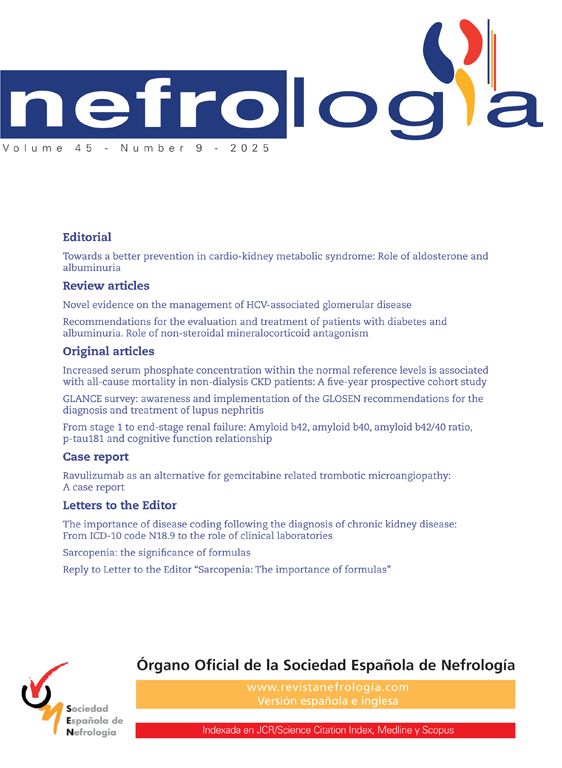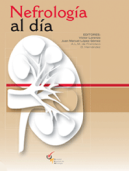We read with interest the article by García-Menéndez et al.1 on POCUS for the detection and follow-up of sarcopenia in peritoneal dialysis published in your journal.
We agree that ultrasound can be fundamental for the diagnosis and follow-up of sarcopenia due to its simplicity and diagnostic utility. The question that arises concerns the comparator. The diagnostic criteria for sarcopenia of the EWGSOP22 group include the measurement of appendicular mass, recommending Sergi's formula.3 However, the authors use Lin's formula,4 which investigators have studied in hemodialysis patients, but only in Asian patients and excluding patients with a relative overhydration (OH/ECW) >15%. That is a major drawback, given that overhydration is a common problem in dialysis patients.
Using the bioimpedance database of our hemodialysis unit, we have analyzed the differences between Sergi's formula and Lin's. There is a significant difference in the group of patients with relative overhydration >15%, resulting in the Lin formula giving a lower appendicular mass adjusted for height, with a difference between the two methods of 0.4556 ± 0.3489, significantly higher than in the group of patients who had relative OH < 15% (0.1344 ± 0.4064) t; p < 0.001. Given this difference, when analyzing the percentage of sarcopenic patients, we observe a greater number of patients categorized as sarcopenic with Lin's formula (47.4% according to Sergi's formula and 58.7% according to Lin's formula [Fisher's test; p < 0.001]).
Overhydration is more common in patients on peritoneal dialysis than in patients on hemodialysis, so the application of this formula could have significant errors for sarcopenia classification. In the study by García-Menéndez et al., the group of sarcopenic patients had an OH of 2.5 ± 2.0, so it is likely that many of them have a relative overhydration >15% and, therefore, the appendicular mass in that group of patients would be underestimated.
Sergi's formula can be easily calculated from spectroscopic bioimpedance. Although the computer application only provides the values of impedance (Z) and phase angle values, simple trigonometric formulas can be used to calculate resistance (Rz) and reactance (Xc), which are the values used by Sergi's formula. We believe that Sergi’s formula has been studied in European patients and that the EWGSOP2 group recommends its use, future studies should use Sergi’s formula as a comparator.





